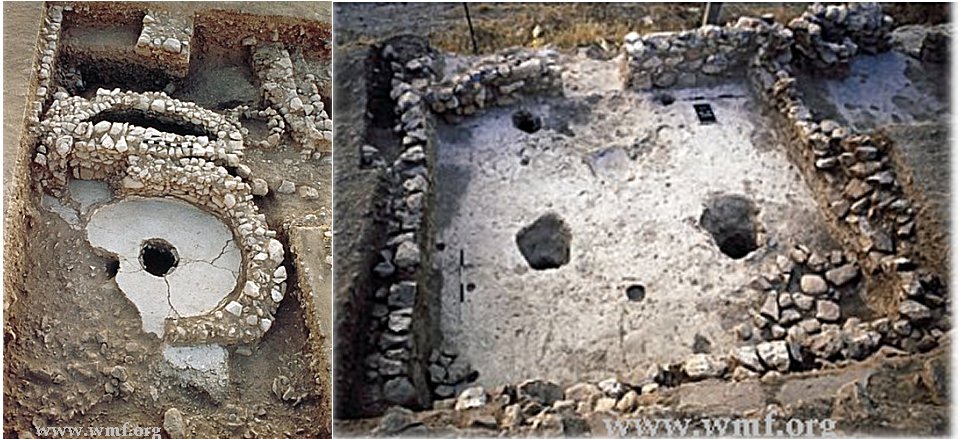Mysterious Ancient Statues From Jordan With Millennia-Old Secrets
A. Sutherland - AncientPages.com - Who were these beings who visited prehistoric Jordan, a place at the crossroads of the oldest human cultures?
The statues along with two of the oldest temples in the world - dating back more than 8,000 years were discovered during excavations at the Neolithic settlement 'Ain Ghazal, in the vicinity of the modern capital of Jordan, Amman in 1983.
Mysterious lifelike, nearly life-size plaster statues are in many ways anonymous; they lack human arms and typical indications of gender.
'Ain Ghazal - a large village of farmers, herders, and hunters - is considered to be established around 7250 BC and later abandoned around 5000 BC.
Archaeologists discovered evidence of multiroomed houses made of stone with timber roof beams, plastered walls, floors, and courtyards. They also excavated cooking hearths with food remains, stone tools, stone and clay figurines, and graves.
Ain Ghazal was settled in about 7200 B.C., in the Neolithic period. Scholars divide this period into Pre-Pottery Neolithic (c. 9000–5500 B.C.) and Pottery Neolithic (c. 5500–4000 B.C.).
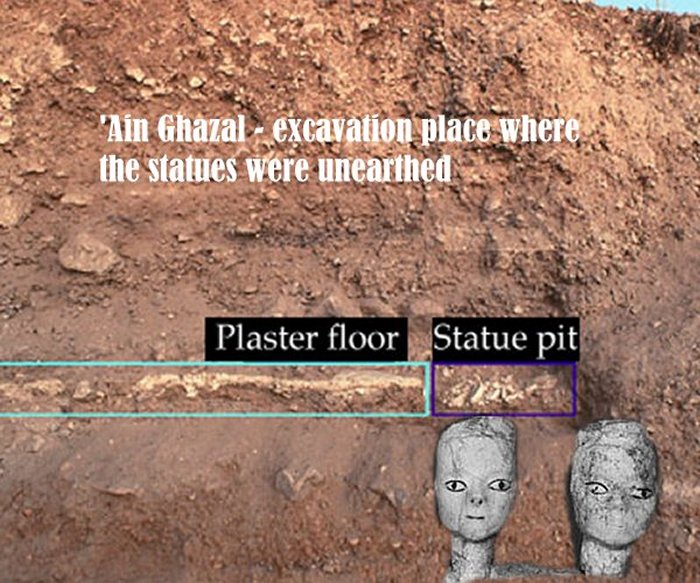
Jordan statues. Photo credits: Arthur M. Sackler Gallery Smithsonian Institution; source2
It flourished in the Pre-Pottery Neolithic for almost 2,000 years. By 6200 B.C. the settlement had grown to occupy nearly 40 acres, almost four times the size of contemporaneous Jericho, only 30 miles away.
Indeed, Ain Ghazal was one of the largest “cities in the Neolithic Near East.
In 1984 archaeologists examined the side of a bulldozer cut made some years earlier during highway construction. They found the edge of a large pit about 2.5 meters under the surface, in which fragments of plaster statues were visible.
The more than 30 human figurines recovered in the prehistoric village of Ain Ghazal, had several strange features. Almost none had both head and body; there were either bodiless heads or headless bodies.
This practice is attested not only at Ain Ghazal but also at other sites in the southern Levant.
All of these figurines are created in clay containing limestone powder mixed with lime plaster.
They are among the most ancient monumental artifacts ever found. Their size is varying from small, between 2 and 3 feet in height to almost life-sized figures.
Their large, elliptical in shape eyes are unique and small ears indicate that these are depictions of an unknown ancient race witnessed by the local population of prehistoric Jordan.
Many fragments of these very ancient artifacts were out of place and badly damaged and putting the statues back together was difficult and time-consuming.
Sometimes, the broken edges of two fragments could be easily matched like the pieces of a puzzle. But the edges of many fragments were heavily eroded, and this was not always possible.
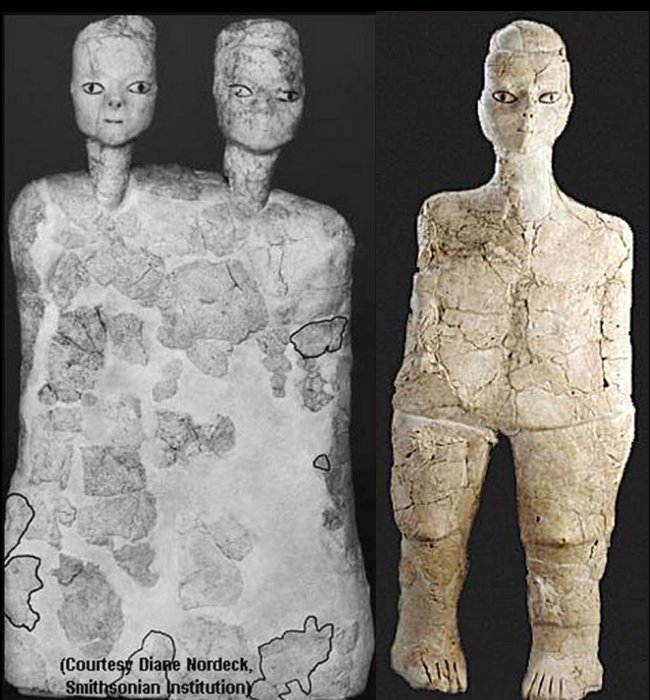
Left: D. Nordeck/Smithsonian Institution; Right: Photo credits: Arthur M. Sackler Gallery Smithsonian Institution
In some cases, the reed or twine impressions preserved on the interior surfaces of the statues could be used to determine where joins should be made. Once joining fragments were identified, conservators used a special kind of adhesive to reattach them. The adhesive can be removed if any further preservation work is needed in the future.
Even after many months of careful work, the statues could not be completely put back together. Conservators filled in gaps with a "dough" made of acrylic resin, glass micro-balloons, and cellulose powder. They tinted the new areas with watercolors to help viewers distinguish them from the ancient fragments.
Almost nothing is known about these mysterious statues and the Neolithic artists who made the statues as well.
(more about images -source)
Written by – A. Sutherland - AncientPages.com Senior Staff Writer
Copyright © AncientPages.com All rights reserved. This material may not be published, broadcast, rewritten or redistributed in whole or part without the express written permission of AncientPages.com
Expand for referencesMore From Ancient Pages
-
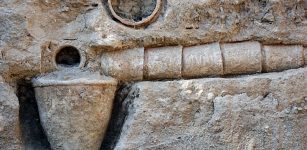 Ancient Aqueduct System Discovered In Boroujerd, Lorestan
News | Sep 16, 2015
Ancient Aqueduct System Discovered In Boroujerd, Lorestan
News | Sep 16, 2015 -
 Goddess Artemis – One Of The Most Respected Olympians
Featured Stories | Oct 1, 2016
Goddess Artemis – One Of The Most Respected Olympians
Featured Stories | Oct 1, 2016 -
 Skull Of Biblical Giant Goliath Is Buried On The Hill Golgotha In Jerusalem – New Claim
Archaeology | Nov 7, 2019
Skull Of Biblical Giant Goliath Is Buried On The Hill Golgotha In Jerusalem – New Claim
Archaeology | Nov 7, 2019 -
 Dionysus – Greek God Of Wine, Music, Ritual Madness And Ecstasy Was Born Twice
Featured Stories | Jan 8, 2019
Dionysus – Greek God Of Wine, Music, Ritual Madness And Ecstasy Was Born Twice
Featured Stories | Jan 8, 2019 -
 Among Ancient Maya Cacao Was Used In Celebrations And Was Common To All People
Archaeology | Sep 27, 2022
Among Ancient Maya Cacao Was Used In Celebrations And Was Common To All People
Archaeology | Sep 27, 2022 -
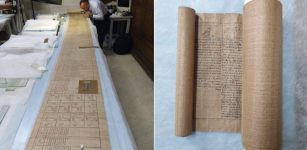 Never-Before-Seen 16 Meters Long Ancient Egyptian Papyrus Unveiled To The Public
Artifacts | Feb 21, 2023
Never-Before-Seen 16 Meters Long Ancient Egyptian Papyrus Unveiled To The Public
Artifacts | Feb 21, 2023 -
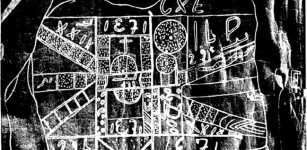 Undeciphered Ancient Stone Maps With Mysterious Signs May Hold Key To The Spider Rock Treasure
Artifacts | Apr 29, 2014
Undeciphered Ancient Stone Maps With Mysterious Signs May Hold Key To The Spider Rock Treasure
Artifacts | Apr 29, 2014 -
 500-Hundred-Year-Old Mystery Of Aztecs’ Death May Have Been Solved – New Study
Archaeology | Jan 17, 2018
500-Hundred-Year-Old Mystery Of Aztecs’ Death May Have Been Solved – New Study
Archaeology | Jan 17, 2018 -
 Tahpanhes – Biblical City Where Prophet Jeremiah And King Zedekiah’s Daughters Hid From The Babylonians
Biblical Mysteries | Jul 19, 2021
Tahpanhes – Biblical City Where Prophet Jeremiah And King Zedekiah’s Daughters Hid From The Babylonians
Biblical Mysteries | Jul 19, 2021 -
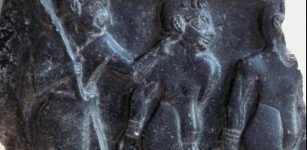 First Sumerian Revolt – People Oppose The Harsh Akkadian Empire
Featured Stories | Apr 14, 2023
First Sumerian Revolt – People Oppose The Harsh Akkadian Empire
Featured Stories | Apr 14, 2023 -
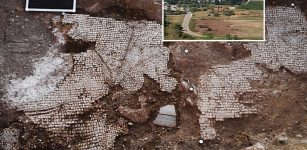 Ancient Colorful Nile-Scene Mosaics, Plastered Walls, Water Cistern Unearthed On The Shore Of The Sea Of Galilee
Archaeology | Sep 27, 2022
Ancient Colorful Nile-Scene Mosaics, Plastered Walls, Water Cistern Unearthed On The Shore Of The Sea Of Galilee
Archaeology | Sep 27, 2022 -
 Controversial Artifacts Linked To Cradle Of Civilization In The Americas Result In Scientific Disagreement
Ancient Mysteries | May 14, 2018
Controversial Artifacts Linked To Cradle Of Civilization In The Americas Result In Scientific Disagreement
Ancient Mysteries | May 14, 2018 -
 Mysterious Biblical Celestial City And Its Connection To The North Star – Nonhuman Hands – Part 1
Ancient Mysteries | Feb 22, 2021
Mysterious Biblical Celestial City And Its Connection To The North Star – Nonhuman Hands – Part 1
Ancient Mysteries | Feb 22, 2021 -
 Loss Of Rainforests, Grasslands In Southeast Asia Caused Extinction Of Megafauna And Ancient Humans
Archaeology | Oct 10, 2020
Loss Of Rainforests, Grasslands In Southeast Asia Caused Extinction Of Megafauna And Ancient Humans
Archaeology | Oct 10, 2020 -
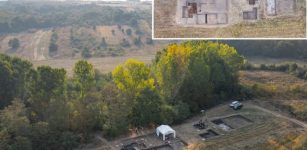 8,000-Year-Old House Remains Discovered In Svinjarička Čuka, Serbia Raise Questions About Europe’s First Farmers
Archaeology | Oct 21, 2024
8,000-Year-Old House Remains Discovered In Svinjarička Čuka, Serbia Raise Questions About Europe’s First Farmers
Archaeology | Oct 21, 2024 -
 Mysterious Lost Tartessian Civilization And Its Ancient Tablet With Paleo-Hispanic Alphabet
Archaeology | Jun 15, 2024
Mysterious Lost Tartessian Civilization And Its Ancient Tablet With Paleo-Hispanic Alphabet
Archaeology | Jun 15, 2024 -
 Horus – One Of The Most Important Ancient Egyptian Gods And Symbol Of Rulership and Justice
Egyptian Mythology | Jun 26, 2018
Horus – One Of The Most Important Ancient Egyptian Gods And Symbol Of Rulership and Justice
Egyptian Mythology | Jun 26, 2018 -
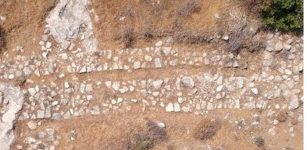 3,000-Year-Old Settlement Studied By Archaeologists In Cyprus
Archaeology | Sep 10, 2022
3,000-Year-Old Settlement Studied By Archaeologists In Cyprus
Archaeology | Sep 10, 2022 -
 On This Day In History: Battle Of San Domingo Was Fought – On February 6, 1806
News | Feb 6, 2017
On This Day In History: Battle Of San Domingo Was Fought – On February 6, 1806
News | Feb 6, 2017 -
 Attila The Hun: The Destroyer Of Rome Among Most Fearsome Enemies The Empire Ever Faced
Featured Stories | Jun 24, 2019
Attila The Hun: The Destroyer Of Rome Among Most Fearsome Enemies The Empire Ever Faced
Featured Stories | Jun 24, 2019


